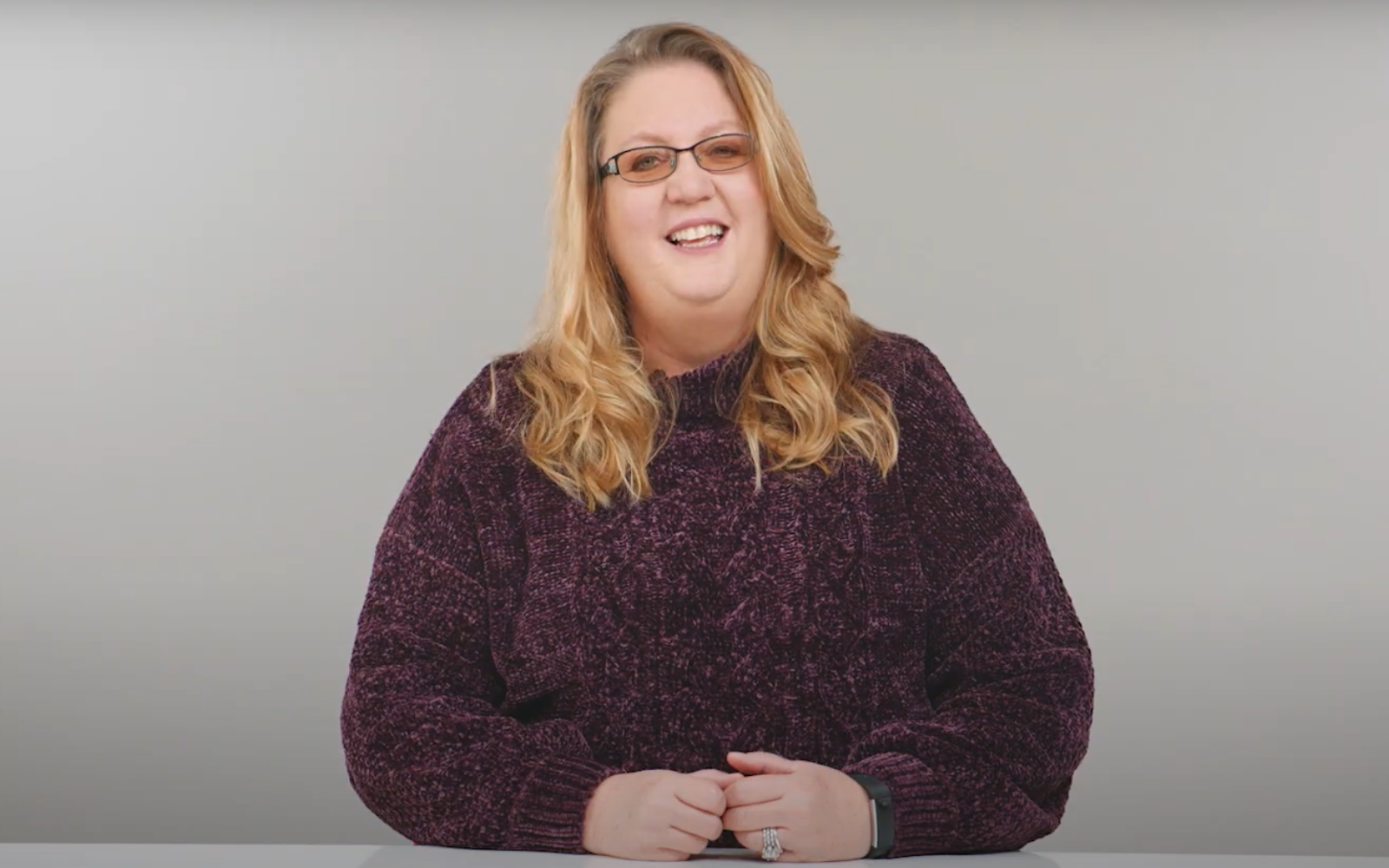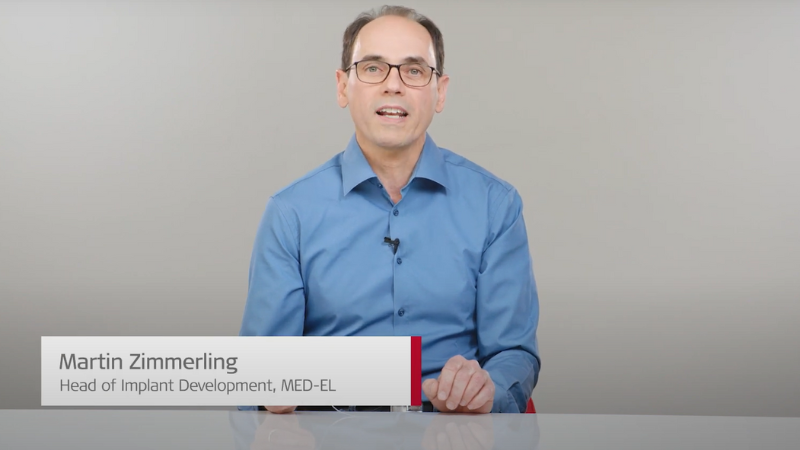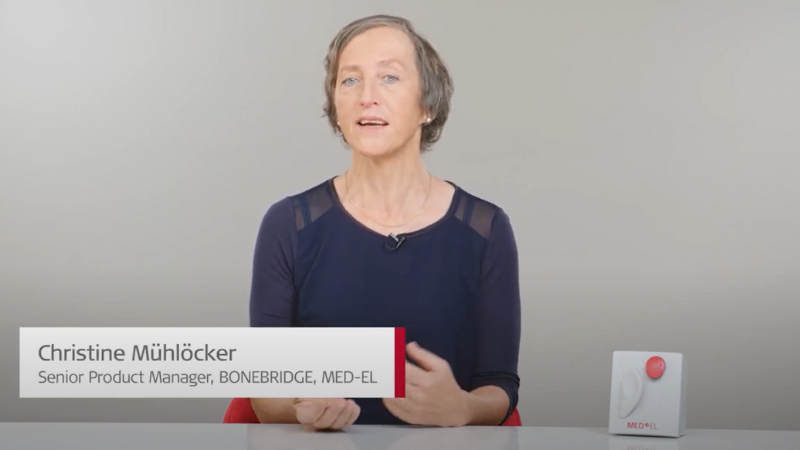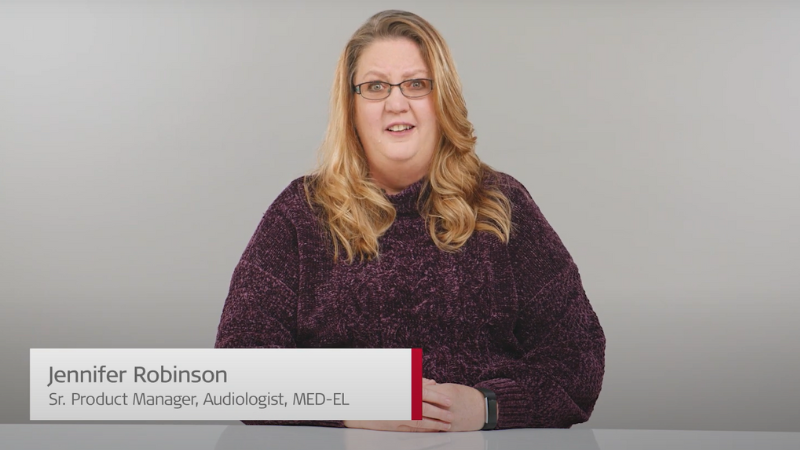
MED-EL
Published Jun 30, 2021 | Mar 03, 2025
MED-EL Experts Explain Our Hearing Technology
Ever wondered how we make such reliable hearing implants? Or how bone conduction implants work? Or how hearings aids and cochlear implants can work together?

We asked three of the experts behind our technology to explain some of the common questions we get about our hearing implants. This is what they have to say.
Martin Zimmerling, Head of Implant Development
At MED-EL for more than 20 years, Martin and his team of engineers are responsible for everything inside our cochlear implants. And that includes safety capacitors. Not heard of them? These tiny electronic components are some of the heroes of our cochlear implant design and help us create safe and reliable implants. How?
Here’s Martin to explain:
“Safety capacitors take up nearly 50 percent of the space inside our cochlear implants. That sounds like a lot, but we are totally convinced that each of these safety capacitors is worth the space!”
Martin Zimmerling
Head of Implant Development, MED-EL
Christine Mühlöcker, Senior Product Manager
As the product manager for our BONEBRIDGE implant system, Christine is the expert in all things bone conduction—and the perfect person to explain how different bone conduction systems work.
Take it away, Christine:
“Bone conduction implants can have direct or indirect drive. Direct drive means that the implant itself generates vibrations and transfers them directly to the bone—it drives the bone directly.”
Christine Mühlöcker
Senior Product Manager, BONEBRIDGE, MED-EL
Christine works with R&D teams, regulatory teams, and surgeons all over the world to make sure that BONEBRIDGE is as good as it can be. Here, she explains more about the reliability and future of this innovative hearing implant system.
"BONEBRIDGE is the world’s most advanced and established bone conduction implant. It has a decade of success with thousands of recipients worldwide.”
Christine Mühlöcker
Senior Product Manager, BONEBRIDGE, MED-EL
Jennifer Robinson, Corp. Director of Product Management Hearing Solutions & Audiologist
With over 25 years of experience in the field, Jen is one of the audiology experts at MED-EL headquarters. One topic particularly close to her heart is bimodal hearing. This is when you have a cochlear implant on one side and a hearing aid on the other.
Jen explains more about how this works with MED-EL cochlear implants in this video.
"The closer your hearing devices are in processing and analyzing sound, the easier it is for your brain.”
Jennifer Robinson
Corp. Director of Product Management Hearing Solutions* & Audiologist, MED-EL
*Jennifer Robinson has been a Corp. Director of Product Management Hearing Solutions since 2023.
Thank you Martin, Christine, and Jen for sharing your insights.
References

MED-EL
Was this article helpful?
Thanks for your feedback.
Sign up for newsletter below for more.
Thanks for your feedback.
Please leave your message below.
Thanks for your message. We will reply as soon as possible.
Send us a message
Field is required
John Doe
Field is required
name@mail.com
Field is required
What do you think?
The content on this website is for general informational purposes only and should not be taken as medical advice. Please contact your doctor or hearing specialist to learn what type of hearing solution is suitable for your specific needs. Not all products, features, or indications shown are approved in all countries.
Myke HUNT
March 19, 2025
Bone bridge not suitable for SUPER POWER BAHA IS
MED-EL
March 21, 2025
Hi Myke, thanks for your comment. If you want to learn more about BONEBRIDGE and for which levels and kinds of hearing loss it can be an option, please head over to our website: https://www.medel.com/hearing-solutions/bonebridge or https://www.medel.pro/indications Kind regards, Barbara
Connie Caissie
March 19, 2025
I have a Med-El cochlear implant on right side. I asked for testing for one on left side, passed balance testing, surgeon was fine with doing implant until the audiologist decided that it wasn’t a good idea as I could lose the low sounds in my left ear( I hear or comprehend nearly nothing in L ear and hearing aid does nothing) I really want this and am now nearly 78. I adapted quickly to my first implant but find it difficult hearing nothing on left. I am perfectly willing to give up the scant hearing in L ear for an implant.
MED-EL
March 20, 2025
Connie, thank you for your comment and for sharing this with us. We would recommend getting in touch with your local MED-EL team as they are best placed to assist in finding an option that suits your needs: https://www.medel.com/contact-med-el as well as discussing options with your medical professional. Kind Regards
Astha
March 20, 2025
Dear all This is inform you that machine body is made by soft material so machine is damaged after soft shok. Then we will not use properly. Please suggest.
MED-EL
March 21, 2025
Hi Astha, thanks for reaching out. If you experience any issues with your audio processor, please contact your local MED-EL representative - they will support you so you can get back to hearing as soon as possible. You can reach out to them directly via our website: https://www.medel.com/contact-med-el Kind regards, Barbara

MED-EL

MED-EL






Conversation
4 Comments